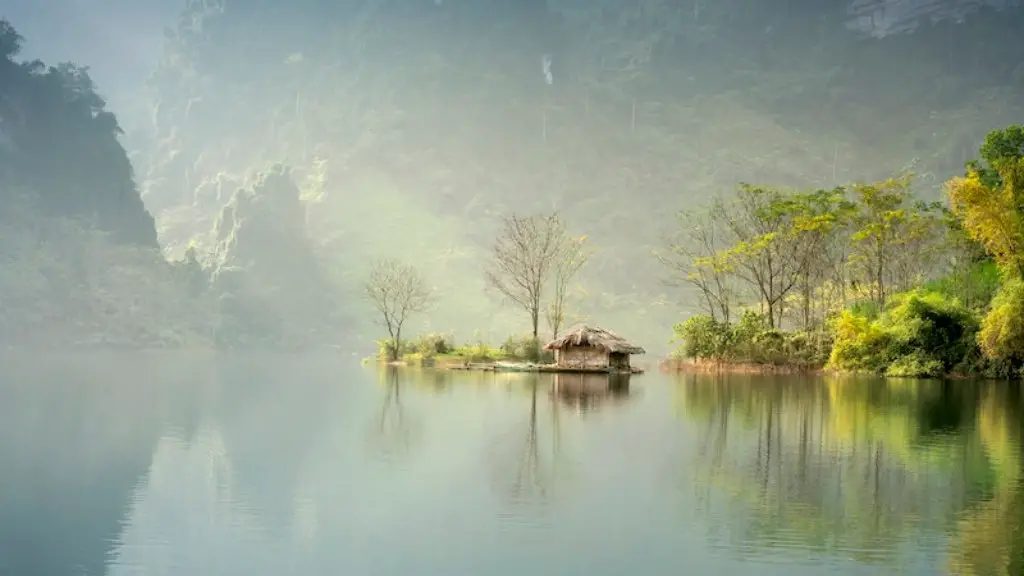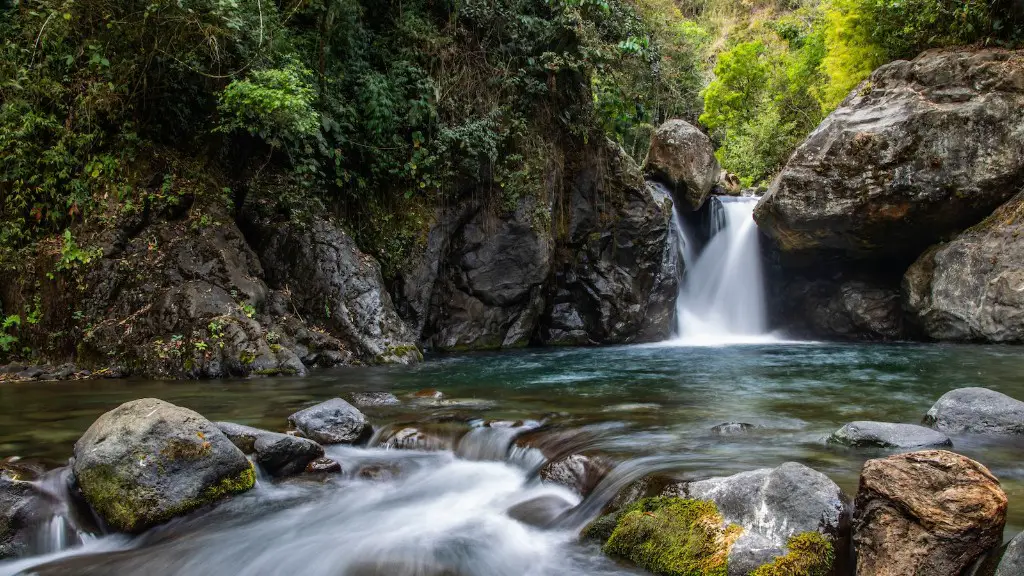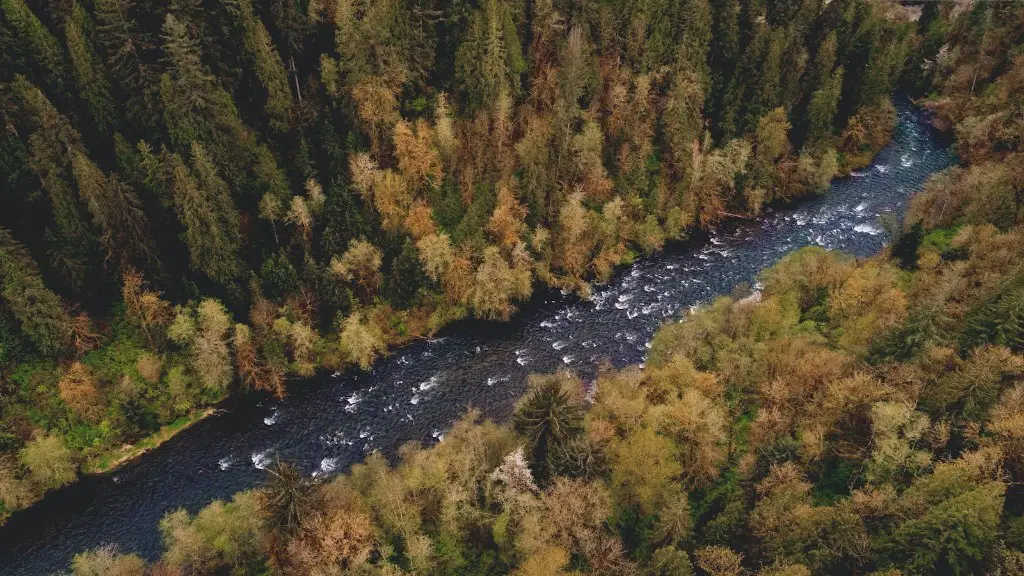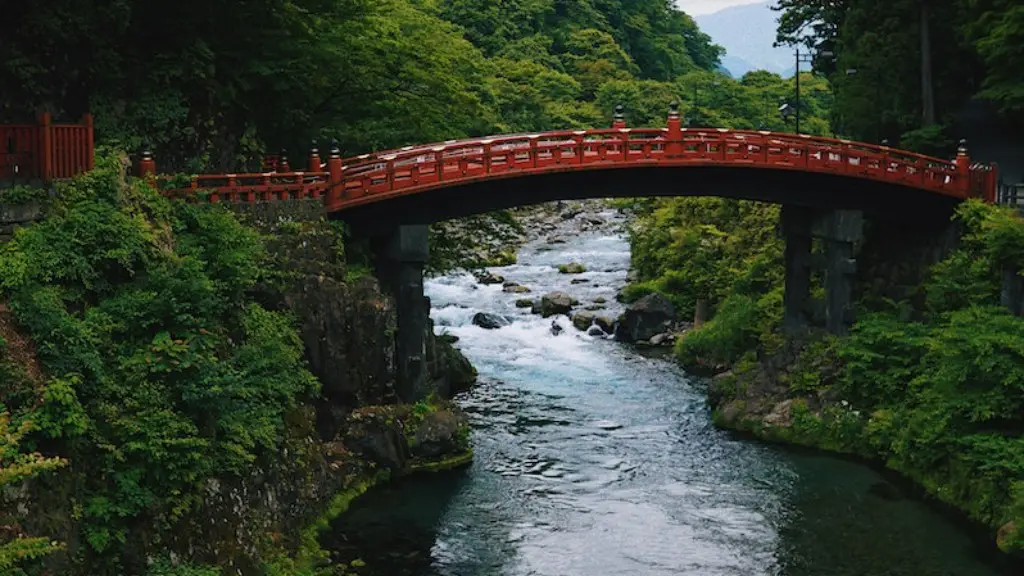The Congo River is located in the central African continent and flows through the Congo Basin, the second largest rainforest in the world. It is the second longest river in Africa after the Nile River and the ninth longest river in the world. The Congo River is also the deepest river in the world, with depths exceeding 750 feet (230 meters).
The Congo River is located in the Congo Basin in central Africa. The Congo Basin is a large area of tropical rainforest that covers parts of six countries, including the Congo Republic, the Democratic Republic of the Congo, and Angola. The Congo River is the second longest river in Africa, after the Nile, and it is the second largest river in the world by discharge, after the Amazon.
Where is the Congo river located?
The Congo River is a major river in west-central Africa. With a length of 2,900 miles (4,700 km), it is the continent’s second longest river, after the Nile. The Congo River is the world’s deepest river, with a depth of about 720 feet (220 meters).
The Congo River is one of the world’s great rivers, carrying 125 million cubic feet of water into the Atlantic Ocean every second. That’s more flow than any other river in the world that’s not the Amazon. The Congo is a vital waterway for the people of Central Africa, providing them with transportation, fish, and water for irrigation. The river is also home to a variety of plant and animal life.
Where is the Congo river basin located on a world map
The Congo Basin is the world’s second largest tropical rainforest after the Amazon Basin. It covers an area of over 500 million acres (2 million square kilometers) and extends across six countries: Cameroon, the Central African Republic, the Democratic Republic of the Congo, Gabon, Equatorial Guinea, and the Republic of the Congo.
The Congo Basin is home to a diverse array of plant and animal life, including many endangered and endemic species. The basin’s rainforests are a major source of timber and other forest products. They also play an important role in the global carbon cycle, and are a critical habitat for many endangered species.
The two cities of Kinshasa and Brazzaville are situated on opposite sides of the Congo River at the Pool, where the river narrows and falls through a series of cataracts in deep canyons. These canyons are collectively known as the Livingstone Falls, and they run by the cities of Matadi and Boma before emptying into the sea at Muanda.
What country owns the Congo river?
The Congo River system is one of the most important river systems in Africa. It runs through the Republic of the Congo, the Democratic Republic of the Congo, the Central African Republic, western Zambia, northern Angola, and parts of Cameroon and Tanzania. The Congo River is a major source of water for the people living in these countries and is also an important transportation route.
The Congo River is a major source of hydroelectric power in Africa, and is also used for trading copper, sugar, coffee, cotton, and palm oils. River streamers operate throughout the year between Kinshasa and Kisangani.
What are 3 interesting facts about the Congo river?
The Congo River is the ninth longest river in the world, and the second longest river in Africa after the Nile. It has a length of 4,710 miles (7,600 km). The Congo River is also the deepest river in the world, with depths exceeding 220 meters (720 feet). The Congo River is the only major river to cross the equator twice. The Congo River has the third largest drainage basin on Earth after the Amazon and Rio Plata basins.
The Congo Basin is one of the most biodiverse and ecologically important regions on Earth, and has been inhabited by humans for more than 50,000 years. It provides food, fresh water and shelter to more than 75 million people, and is home to an incredible array of plant and animal life. This region is under threat from deforestation, climate change and other human activities, and it is essential that we work to protect it.
What is the deepest river on Earth
The Congo is the deepest river in the world. Its headwaters are in the north-east of Zambia, between Lake Tanganyika and Lake Nyasa (Malawi), 1760 metres above sea level; it flows into the Atlantic Ocean. The broadest and deepest river in Africa, it is by far the largest tributary of the Congo River in terms of both discharge and watershed.
The Amazon is the longest river in the world, with a length of around 6,400km. It is also the largest river by discharge volume and drainage basin area. With a basin area of around 7 million square kilometres, it is nearly twice as big as the Congo river basin. The Amazon crosses Peru (headwaters), Bolivia, Ecuador, Colombia, Venezuela and Brazil (mouth).
What is the second largest river in the world?
The River Nile – The world’s second longest river – is a major north-flowing river in northeastern Africa. With a length of approximately 6,650 kilometers (4,132 miles), it is the longest river in Africa and the Arab world, and the tenth longest in the world. The Nile has two major tributaries, the White Nile and Blue Nile. The White Nile is considered to be the headwaters and primary stream of the Nile itself. The Blue Nile, however, is the source of most of the water and silt. The White Nile is longer and rises in the Great Lakes region of central Africa, with the most distant source still undetermined but located in either Rwanda or Burundi. It flows north from Tanzania, feeding Lake Victoria.
The Congo Basin is one of the most important rainforests in the world, serving as a critical habitat for many endangered species and providing food security and an essential lifeline for indigenous and local populations. Its vast size and Carbon sinks make it an important player in the fight against climate change.
What is the problem with the Congo river
Unsustainable and illegal logging in the Congo Basin Forest by both big and small companies is leading to deforestation, destruction of wildlife habitat, diminished resilience to climate change, and damaging local communities. The Congo Basin forest is the second largest rainforest in the world and is home to many endangered species. Deforestation in the Congo Basin is due to many factors, including subsistence agriculture, commercial logging, charcoal production, and mining. The Congo Basin Forest is also being degraded by illegal logging, which is often conducted by large companies. This illegal logging is contributing to deforestation and the destruction of wildlife habitat. It is also making the forest less resilient to climate change. Local communities are also being damaged by unsustainable and illegal logging in the Congo Basin Forest. These communities rely on the forest for their livelihoods, and the loss of the forest will have a profound impact on their ability to survive.
Congo River Expedition
The DR Congo River Expedition can be taken in two seperate parts. The first part is a 16 day tour from where you are on the river from Mbandaka to Lisala. This costs from £6395 per person. Contact us for further details or download the tour dossier below.
What lives in the Congo river?
The Congo River is home to some of the deadliest creatures on Earth, including crocodiles and poisonous snakes like puff adders, green mambas, and cobras. While these creatures pose a serious threat to humans, the surrounding rainforest is also home to a variety of other animals, including elephants, chimpanzees, bonobos, and gorillas.
The Congo is the second largest country in Africa by area and the largest country in sub-Saharan Africa by area. It is bordered by nine other countries— Angola, Cameroon, the Central African Republic, the Republic of the Congo, the Sudan, Uganda, Rwanda, Burundi, and Tanzania. The name “Congo” (from Kongo, a Bantu kingdom that occupied the mouths of the Congo and Ubangi rivers) was given to the river by Portuguese explorers in the 15th century and later applied to the entire territory. “Zaire” was the country’s official name from 1971 to 1997.
The Congo has a long history of political instability and violence. It was a Belgian colony from 1908 until 1960. In 1960, the Congo gained independence from Belgium, but its early years were marked by instability and a series of military coups. In 1965, Joseph-Désiré Mobutu seized power in a military coup and went on to rule the country for more than three decades. In 1997, a rebellion led by Laurent-Désiré Kabila ousted Mobutu from power and renamed the country the Democratic Republic of the Congo.
Since Kabila’s assassination in
Why is Congo so rich
The mining industry of the Democratic Republic of the Congo is a cornerstone of the country’s economy, accounting for more than 95% of its export value. The DRC is blessed with an abundance of minerals and petroleum, including copper, diamonds, tantalum, tin, gold, and cobalt. The DRC is the world’s leading producer of cobalt, accounting for more than 63% of global production. The mining sector has great potential to spur economic growth and development, but it faces significant challenges, including weak governance, conflict, and infrastructure constraints. Nonetheless, the DRC remains an important player in the global minerals and petroleum markets.
The Hudson River is an important waterway in the United States. It is the deepest river in the country, and its headwaters are located in the Lake Tear of the Clouds in New York’s Adirondack Park. The river travels 315 miles from that point to Upper New York Bay.
Final Words
The Congo River is located in Africa. It is the second longest river in Africa after the Nile and the second largest river in the world by discharge after the Amazon.
The Congo River is located in the Democratic Republic of the Congo in Africa. It is the second longest river in Africa and the world’s deepest river with depths exceeding 220 feet in some locations. The Congo River is also one of the world’s most dangerous rivers due to its rapids and hippopotamus-infested waters.





